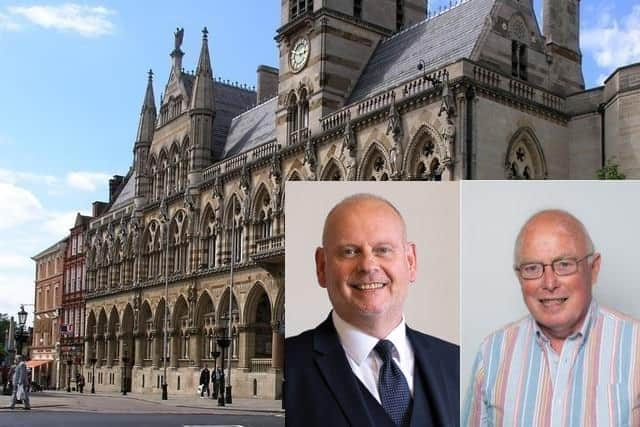REVEALED: Investigation finds West Northamptonshire Council is sitting on £83million of unspent Section 106 funds
and live on Freeview channel 276
West Northamptonshire Council (WNC) is holding an astounding £83million of unspent Section 106 money for the financial years 2021/2022 and 2022/2023.
A Freedom of Information request by this newspaper has revealed the Conservative-led West Northants Council (WNC) has £60,292,233 for the year 2021/22 and £23,188,653.75 for the following year in unspent Section 106 funds.
Advertisement
Hide AdAdvertisement
Hide AdNotably, the figure for 2022/2023 excludes the former Northamptonshire County Council (NCC) funds, which will be disclosed on the council's website by December 31, 2023.


Figures for the year 2023/2024 will only be available after the reconciliation process is completed in April 2024, followed by publication on the website, according to WNC.
What is section 106 money?
Section 106 money, also known as planning obligations or planning gain, is a form of financial contribution made by developers as a condition for obtaining planning permission for a particular development project.
When a developer applies for planning permission, the local planning authority may negotiate a Section 106 agreement with the developer. This agreement outlines specific obligations or contributions that the developer must fulfil to address the potential negative impacts of the proposed development on the local community and infrastructure.
Advertisement
Hide AdAdvertisement
Hide AdThe contributions made by the developer can take various forms, including financial payments, the provision of affordable housing, contributions to local infrastructure projects, or other community benefits. The purpose is to mitigate the effects of the development and ensure that the community receives benefits in exchange for the approval of the development.
WNC addressed the issue with a comprehensive statement.
A council spokeswoman said: "WNC is a newly formed unitary authority [formed in April 2021] incorporating Daventry District Council, Northampton Borough Council, South Northamptonshire Council and half of the former Northamptonshire County Council remit.
“A project is ongoing to amalgamate all data from these legacy areas. This is a major project which the council is in the process of conducting. It is the intention of the council to create a database to make the information you require more transparent and accessible.
“Although the council as unitary authority collects the funds payable via a S106 agreement (which can be incremental payments), the majority of the contributions have a designated purpose and not necessarily a defined recipient which means certain funds do not automatically get allocated.
Advertisement
Hide AdAdvertisement
Hide Ad“Unallocated funds will be managed by internal and external stakeholders via service level agreements and/or by applying for S106 funds through a spending allocation process, to ensure the best use of the funds. The Infrastructure Funding Statement (IFS) published in December will also report on the allocations for previous financial year and list any forthcoming projects.
“Through stakeholder collaboration (including the Capital programme), current funds held and future funds will be spent on suitable and relevant projects as per the requirements of ‘the’ legal agreement – Various contribution categories as follows (not an exhaustive list); health, transport (travel & infrastructure), communities (including village halls etc), refuse & recycling, leisure, education, libraries, strategic highways, town fund(s), on-site & off-site play parks, play areas, and public open space, wildlife & biodiversity, recreation, allotments, police, public art, and local labour initiatives."
